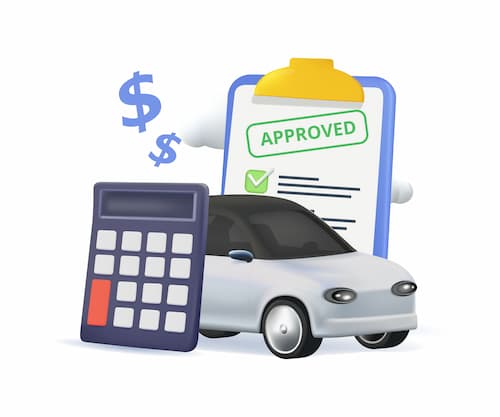- What is a low-mileage insurance discount?
- Who is eligible and who is excluded from low‑mileage discounts?
- State‑by‑state low‑mileage discount rates
- Low-mileage car insurance discounts by company
- How low-mileage car insurance discounts work
- How low-mileage discounts differ from pay-per-mile insurance
- FAQ: Low-mileage discounts
What is a low-mileage insurance discount?
A low-mileage insurance discount provides lower rates to drivers who are on the road less than the average driver.
What constitutes low mileage depends on the insurance company.
“The top end of most carriers to any amount of a discount is usually in that 7,000 to 8,000 annual mileage range,” says Janes-Bartley. “Meaning if you drive 6,800 miles annually, you might get a very small discount, and if you drive 3,000 miles annually, you might get a bigger discount.”
Low-mileage discounts are usually factored into your base rate. When you sign up for your car insurance policy, you provide your carrier with your estimated annual mileage. Your insurance company will give you a rate based on this information.
How much can you save with a low‑mileage discount?
How much you’ll save depends on how many miles you drive, where you live and the insurance company you choose. Discounts range from 2% to 20%. Here’s a breakdown of the averages from top companies:
- If you drive less than 7,500 miles a year: 6% to 20%, or $134 to $597 a year
- If you drive 7,501-9,999 miles a year: 5% to 19%, or $108 to $597 a year
- If you drive 10,000-11,999 miles a year: 4% to 12%, or $61 to $385 a year
- If you drive 12,000 to 14,999 miles a year: 2% to 6%, or $64 to $198 a year
- If you drive more than 15,000 miles a year: typically no discount
Who is eligible and who is excluded from low‑mileage discounts?
Eligibility for low-mileage discounts is simple, since it’s based solely on how many miles you drive each year.
People who qualify for this discount typically include those who:
- Work from home or have a hybrid work schedule
- Have a short commute or carpool
- Are retired
- Frequently use public transportation or walk
While there is nothing about a driver that excludes them from a discount, certain cars may be ineligible, such as:
- Classic or collector cars
- RVs and motorhomes
“Usually, the vehicles eligible cannot be collector cars, classic or antique cars, or motorhome-type vehicles,” Janes-Bartley says.
State‑by‑state low‑mileage discount rates
In some states, such as New Hampshire and Wyoming, insurers offer a discount of only about 5% for driving less than 7,500 miles per year. In other states, you can save as much as 14% (Georgia and Texas) and 17% (California). Discounts taper off the more miles you drive. As you can see from the table, when you drive 12,000 to 14,999 miles, you enter the 2% discount range in most states.
| Mileage range | Before discount | After discount | $ diff | % diff |
|---|---|---|---|---|
| Under 7500 | $2,215 | $2,068 | $147 | 7% |
| 7500-9999 | $2,215 | $2,121 | $94 | 5% |
| 10000-11999 | $2,215 | $2,146 | $69 | 3% |
| 12000-14999 | $2,215 | $2,181 | $34 | 2% |
Low-mileage car insurance discounts by company
USAA has the best low-mileage rates, but only offers coverage to military members and their families. Travelers has the next best low-mileage rates and is available to everyone. If you drive under 7,500 miles a year, you’ll pay an average of $1,852 per year, saving $251.
The table below shows some average low-mileage car insurance discounts offered by various companies.
| Company | Before discount | After discount | $ diff | % diff |
|---|---|---|---|---|
| Allstate | $3,205 | $2,832 | $373 | 12% |
| Farmers | $3,085 | $2,488 | $597 | 18% |
| GEICO | $2,148 | $2,014 | $134 | 6% |
| Nationwide | $2,463 | $1,964 | $499 | 20% |
| Progressive | $2,675 | $2,473 | $202 | 7% |
| State Farm | $2,874 | $2,574 | $300 | 10% |
| Travelers | $2,103 | $1,852 | $251 | 12% |
| USAA | $1,572 | $1,437 | $135 | 9% |
How low-mileage car insurance discounts work
Typically, the fewer miles you drive, the lower your car insurance costs will be. You’ll simply provide an estimate of your annual mileage to your insurance company, and your rates will be adjusted accordingly.
It’s essential to review your policy to determine the listed annual mileage; most companies assume an average of 12,000 miles per year, but others may set it at a higher or lower number. If your average mileage is lower, simply update your policy to receive the discount.
How low-mileage discounts differ from pay-per-mile insurance
Low-mileage discounts and pay-per-mile insurance are both ways for drivers to save based on their driving habits. However, they work differently.
A low-mileage discount is offered on a traditional car insurance policy and uses an estimate of your annual mileage to calculate a discount off the base rate.
Pay-per-mile insurance bases how much you pay each month on a base rate plus a per-mile rate, and charges you based on the actual miles you drive.
| Low-mileage discount | Pay-per-mile insurance | |
|---|---|---|
| Rates are based on: | Base rate + per-mile rate | Base rate - percent discount |
| Mileage is based on: | An annual estimate | Tracking of actual miles driven |
| Miles are tracked by: | Policyholder | Device or app |
| Best for: | People who prefer a set bill each month and don’t want to track miles | People who are willing to pay a different amount each month based on actual miles |
If you're curious as to how much you could save on a pay-per-mile program, try our pay-per-mile calculator to see an estimate based on your actual mileage.
FAQ: Low-mileage discounts
What happens if you exceed your estimated annual mileage?
It depends. Sometimes, your insurance company won’t know. But what if you were to get into an accident on your way to work? Now, your insurance company knows that you regularly commute in your vehicle, not just occasionally drive it. It’s best to be honest.
How do insurance companies verify mileage?
This will depend on your insurance company, but most simply take your word for it, unless you are on a pay-per-mile program.
“Some carriers require mileage tracking, some do not,” Janes-Bartley says. “Some require a photo of the most recent oil change from time to time to document mileage. Carriers can and do use third-party data sources to gather odometer readings so even if the driver does not have to use an app or send ongoing documentation, there are other ways they can get that data and will when they can. If third-party data is unavailable, carriers will contact the driver for documentation and remove the discount if the driving is higher than estimated or documentation is not provided.”
How do you calculate annual mileage for insurance?
You can calculate your annual mileage for insurance purposes in a couple of ways:
- Odometer reading: Look at your odometer at the end of the month and multiply the miles traveled by 12.
- Commute length: Consider your work commute and calculate the weekly distance, then multiply it by 52 to account for the number of weeks in a year. Remember to exclude weekends, but include any regular errands or other driving activities.



